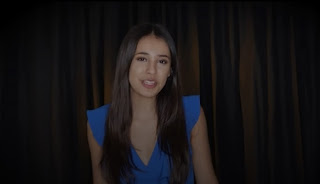Throughout the production process, we experienced a lot of trial and error in due to scheduling conflicts and various issues that did not work out as planned. Fortunately, Martina discovered a collection of B-roll from her prescreens, all filmed with a high-quality camera, which could be used as valuable content for our documentary.
We dedicated an entire class period to gathering B-roll footage and planning future B-roll and interview shot angles to create a solid plan. We also outlined the structure of the story during class since we could not meet up to edit together. I proposed the idea of introducing the story with a prescreen slate, and Martina took care of editing it in.
As for filming, luckily Martina had two cameras and a tripod, due to the number of prescreens she had to film or refilm. These were used and set up to create the shot of her looking at her mom. The interview shots were also used by the same cameras.
An important thing I’m glad we did was we took inspiration from other documentaries and studied how their frames evoked emotions that created a certain effect. I personally see our documentary as more of an American Promise type documentary than an ETTGS and since this documentary was more about the effects of the process than the actual involvement of the process it was important and necessary to take this approach.
I really loved how this project turned out, but if I were to do this project agin I would’ve planned better or solidified our ideas before filming and in class, as many decisions were made on the spot.





No comments:
Post a Comment